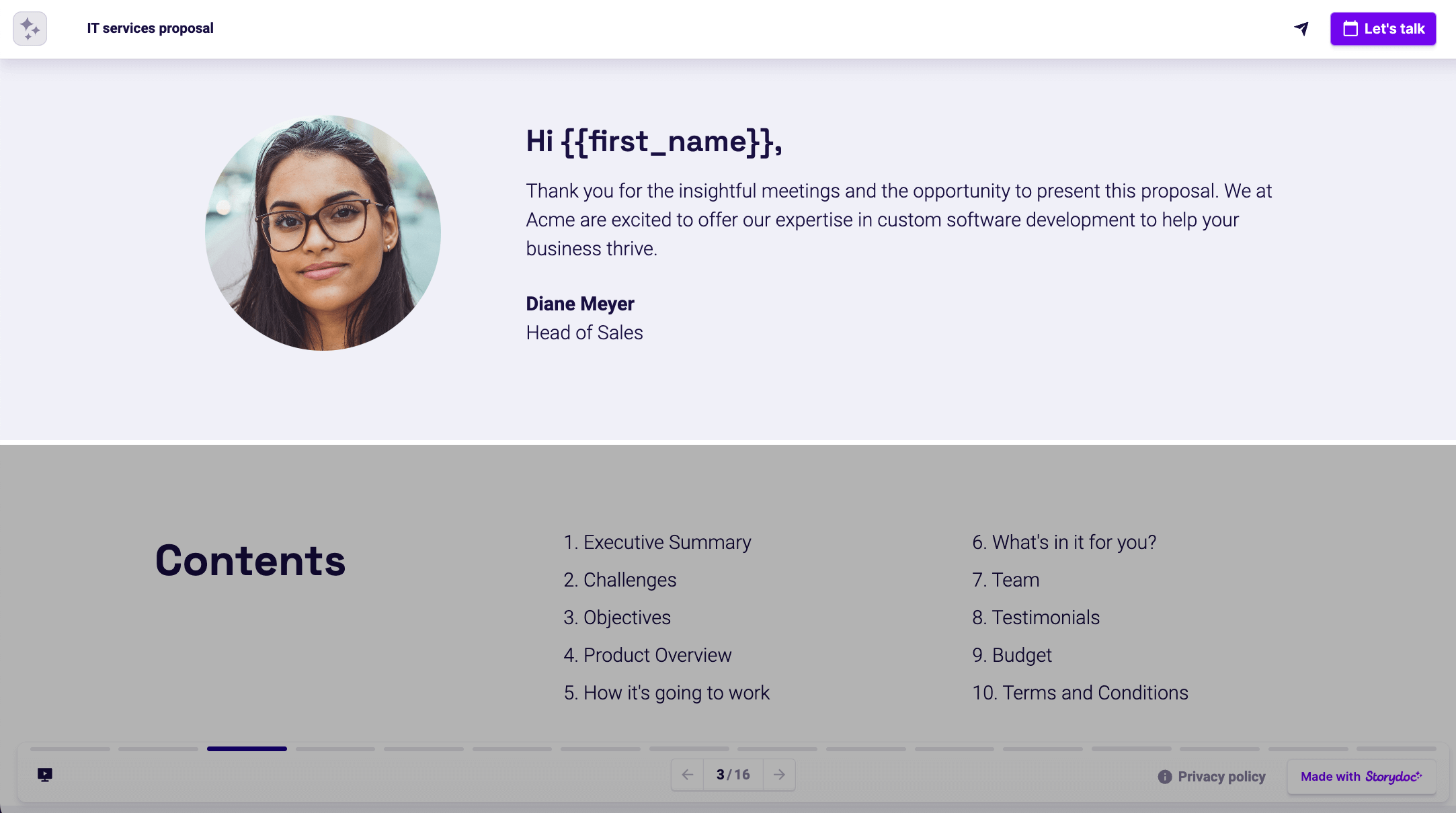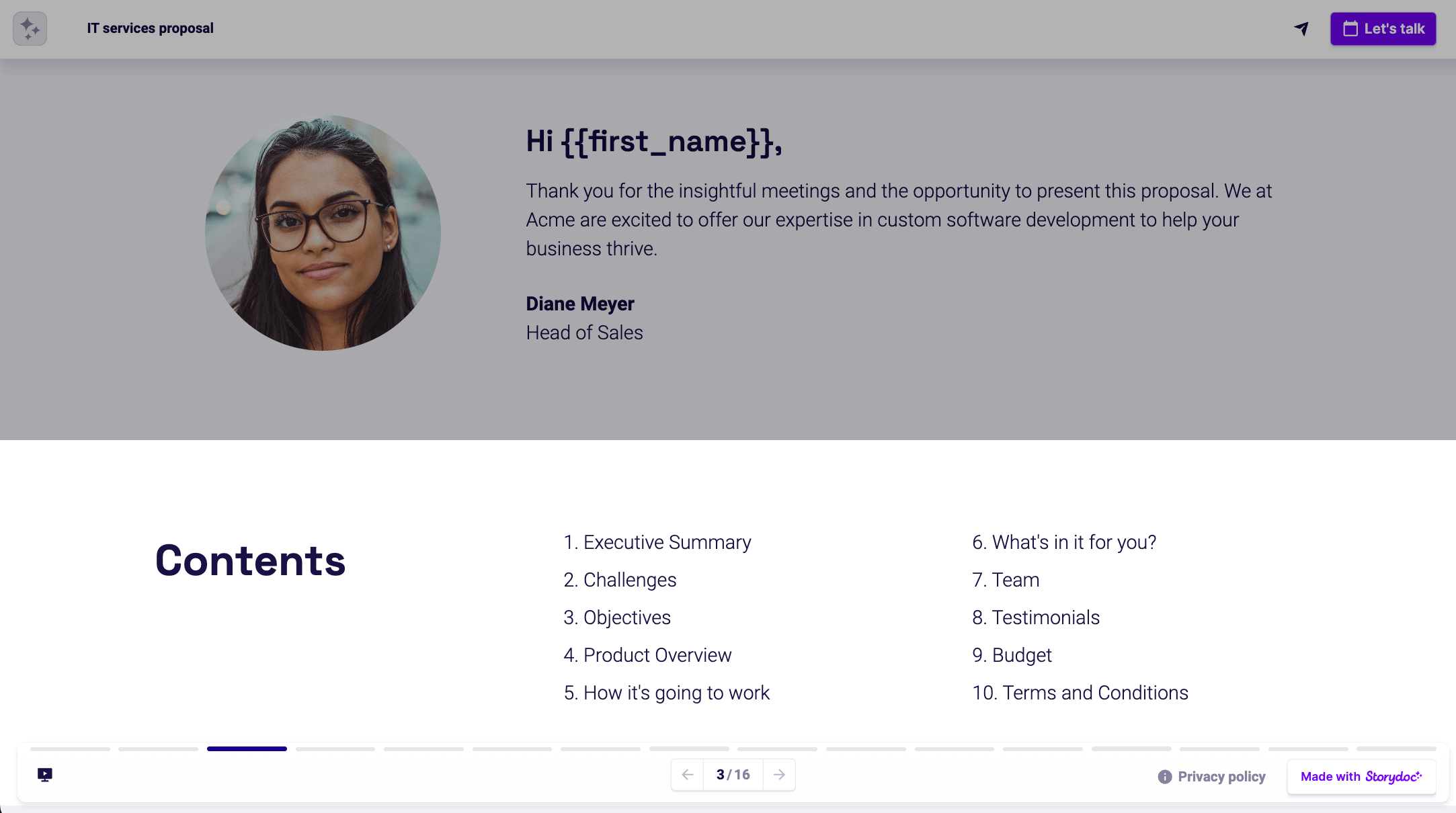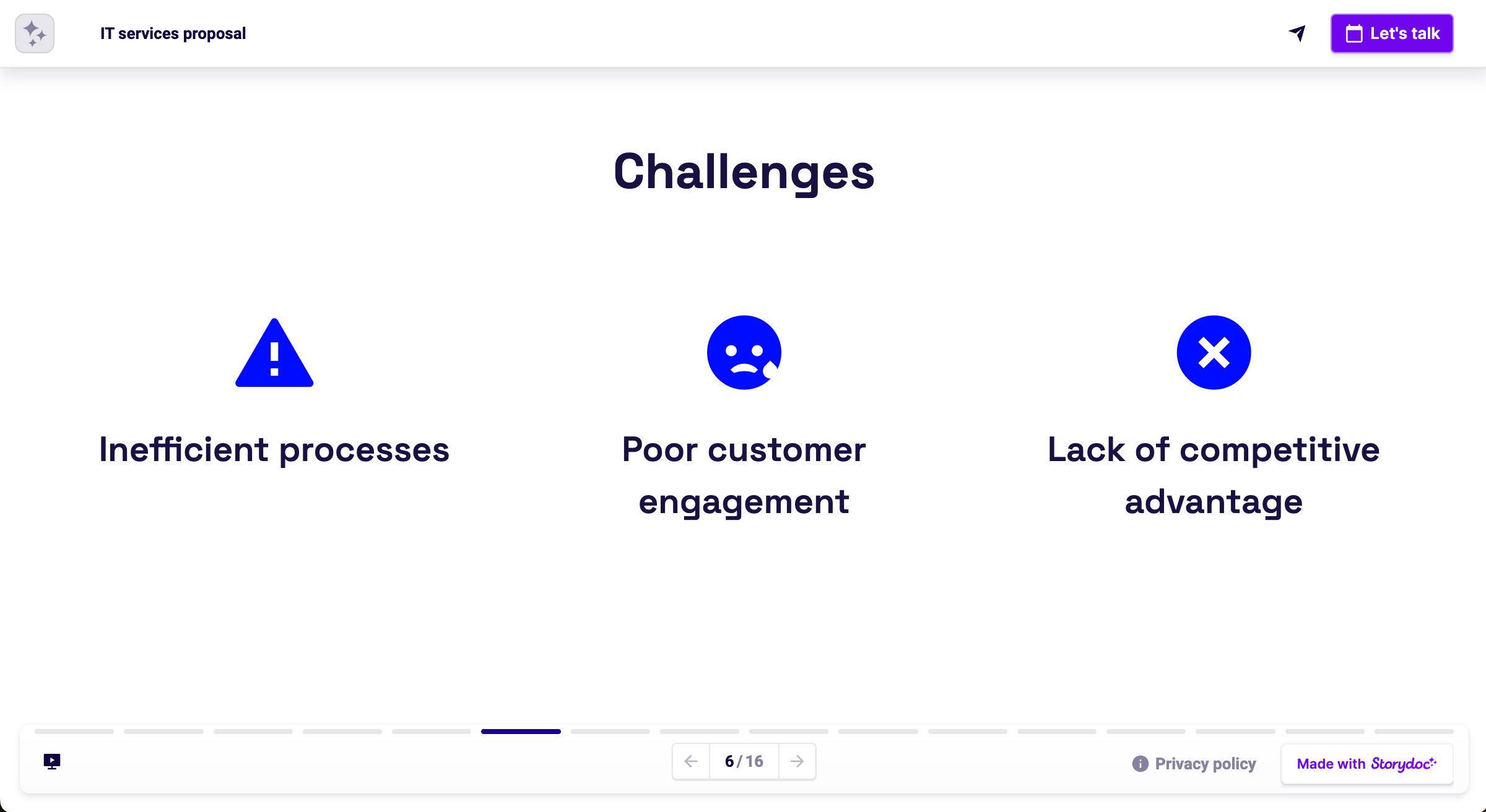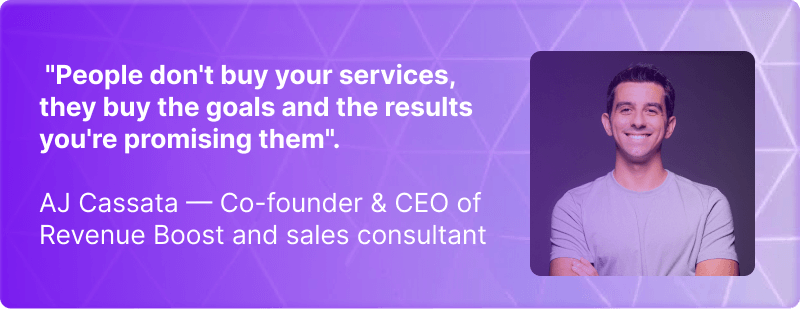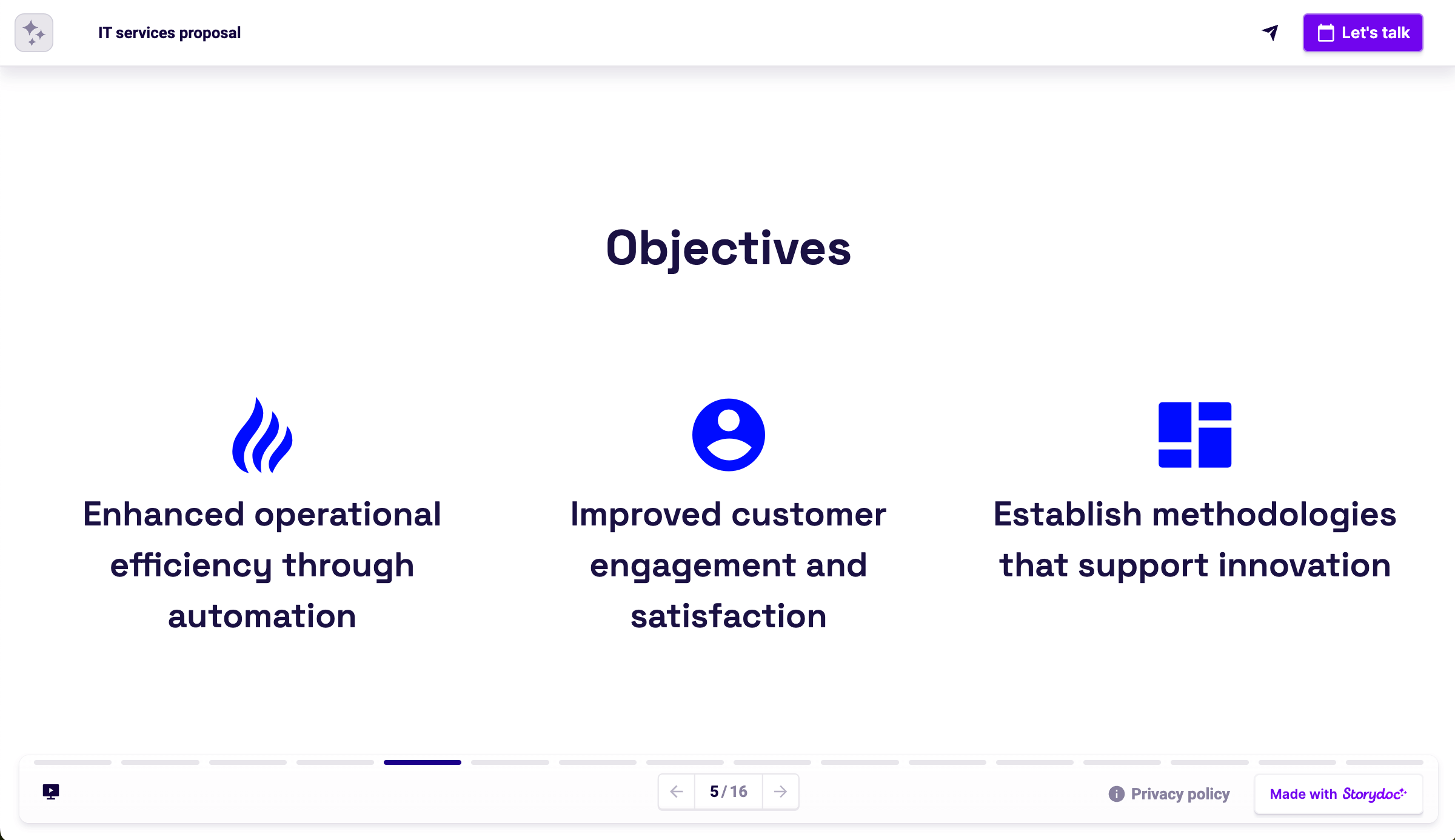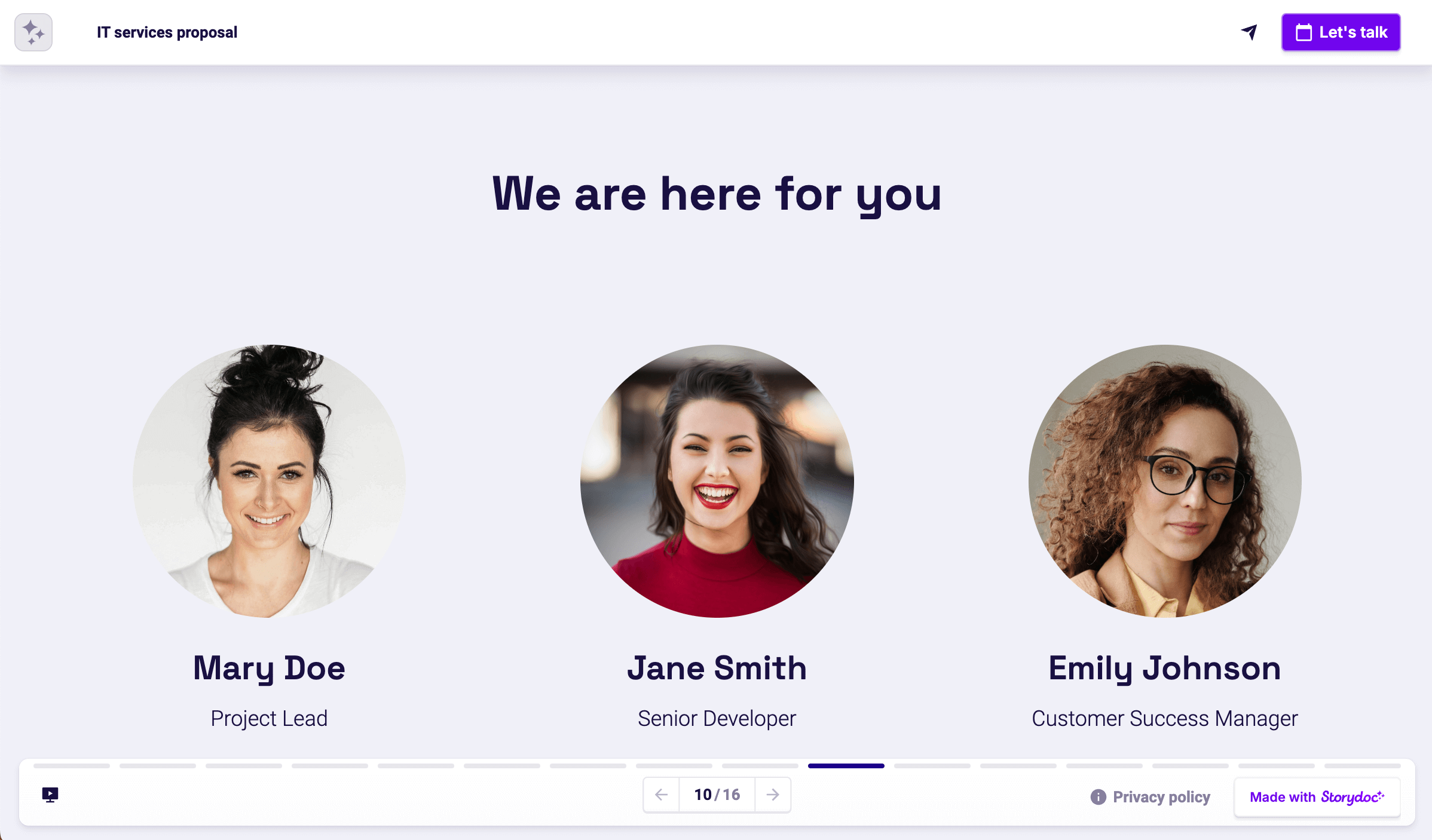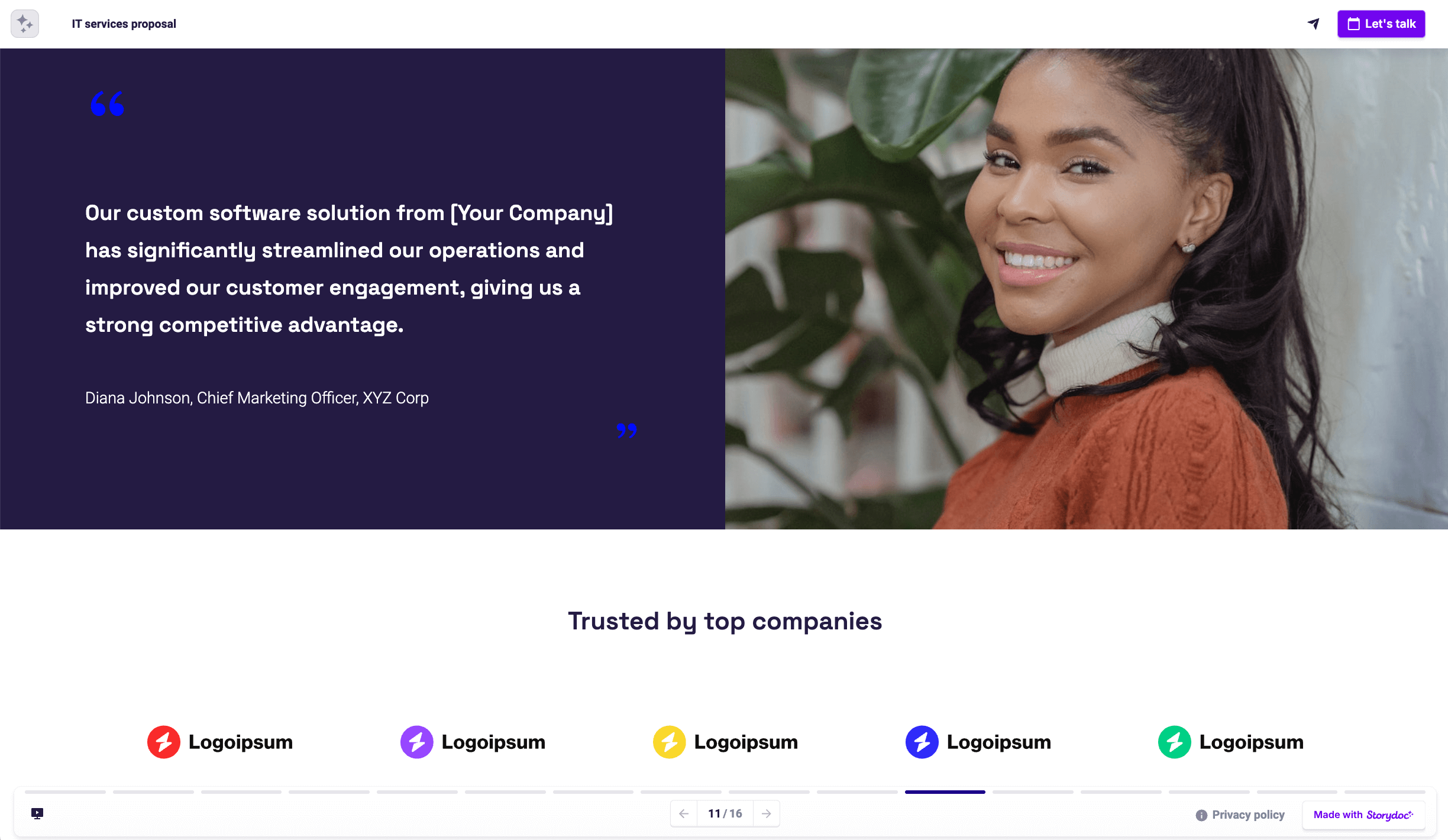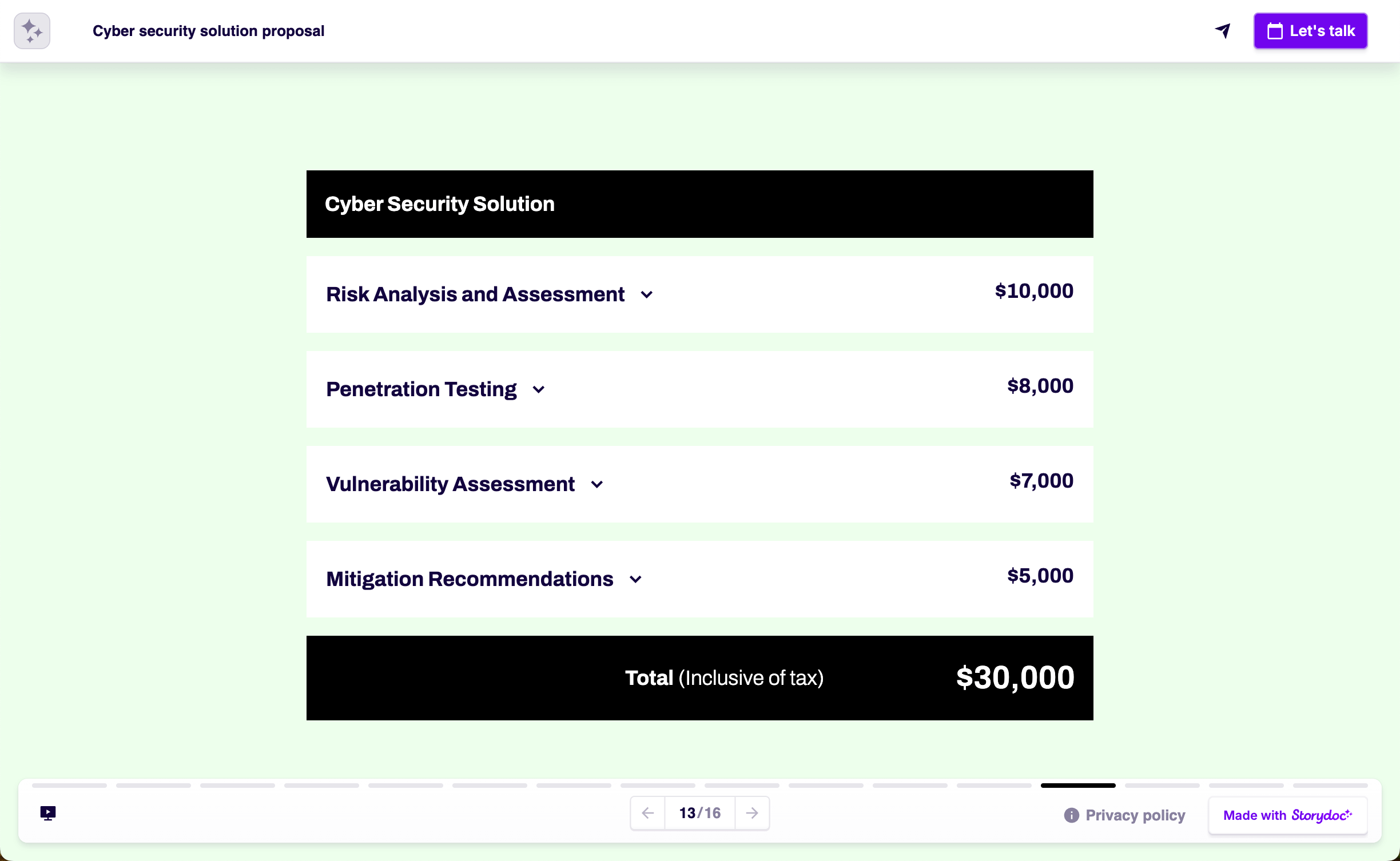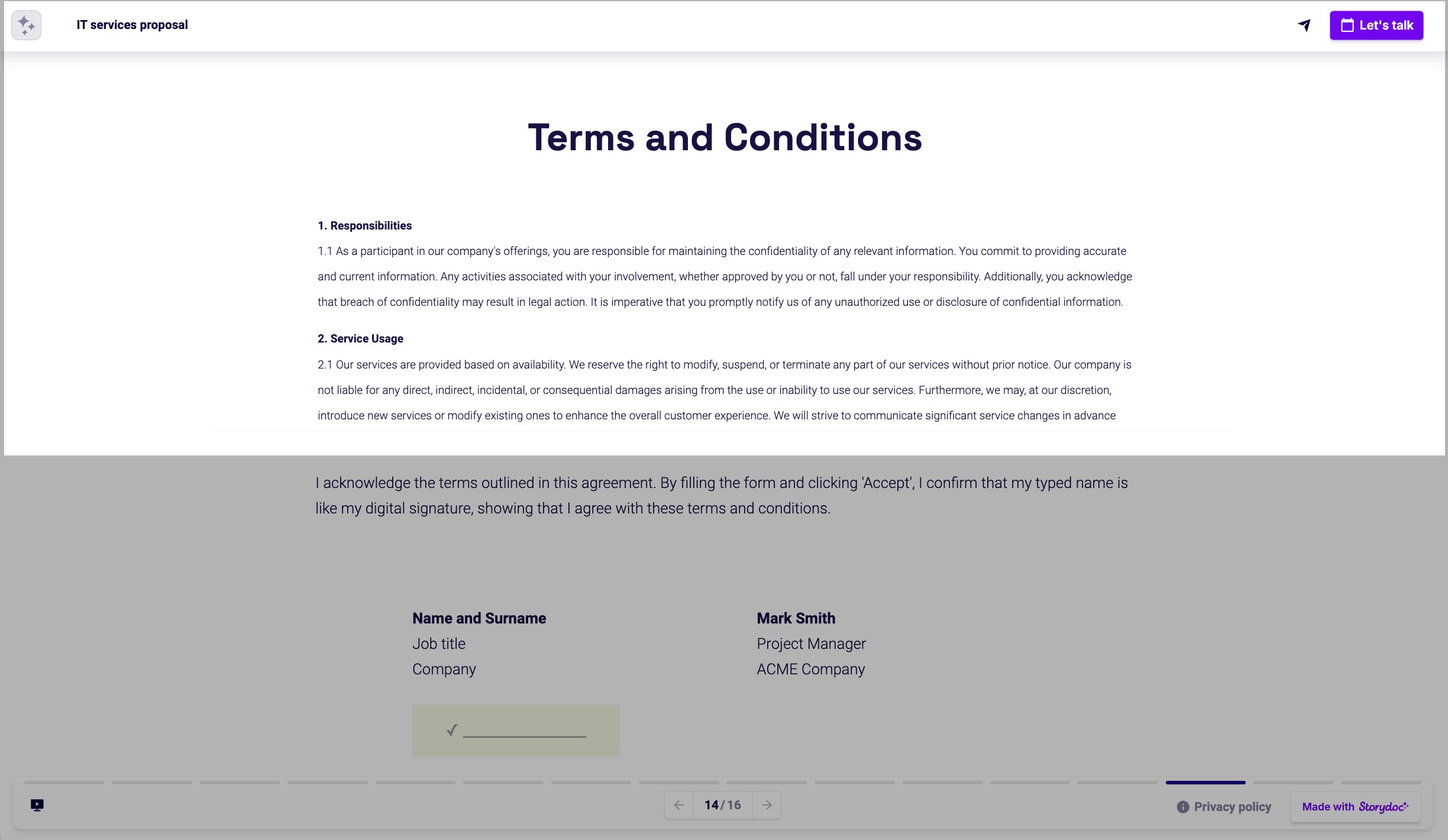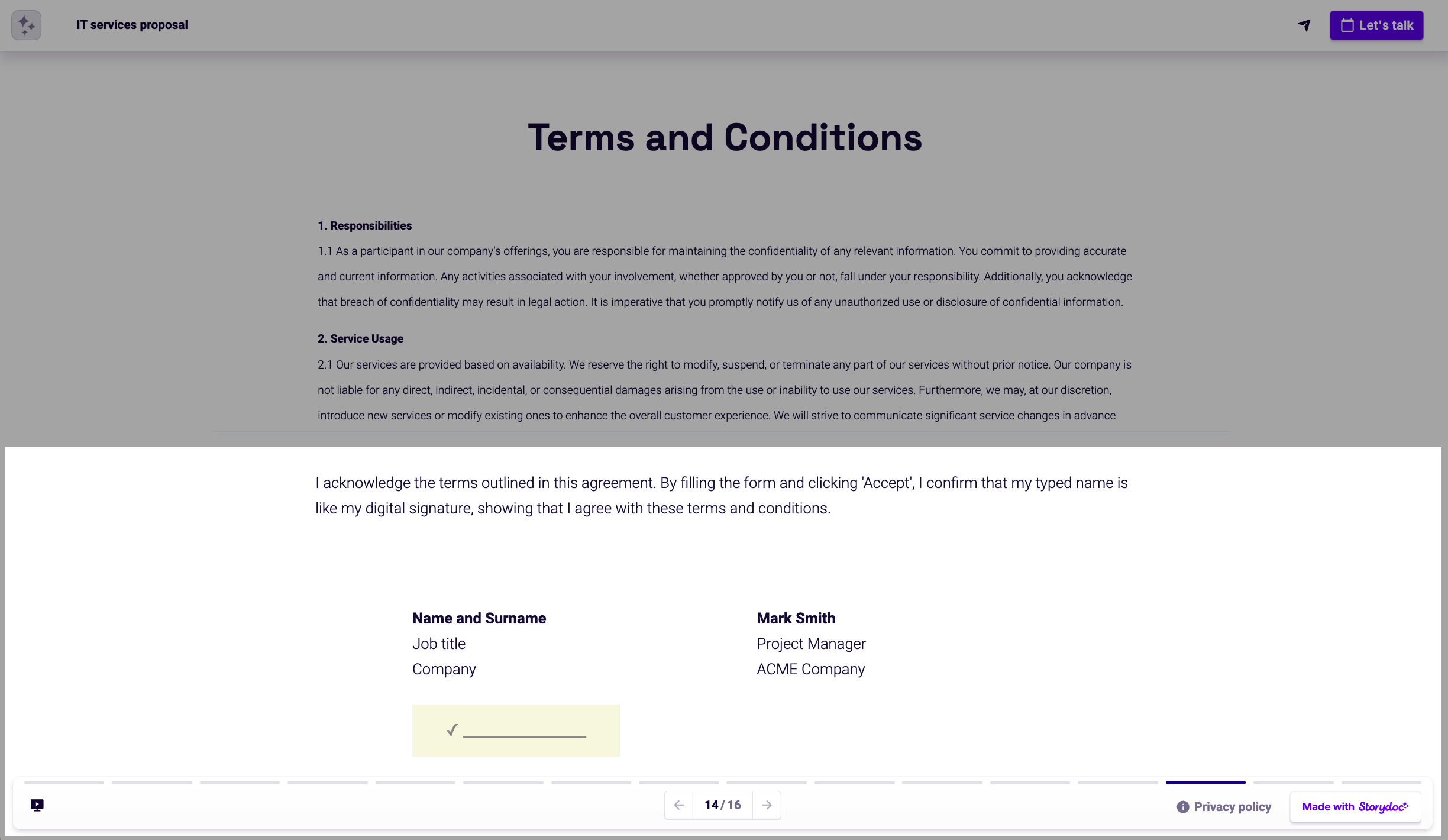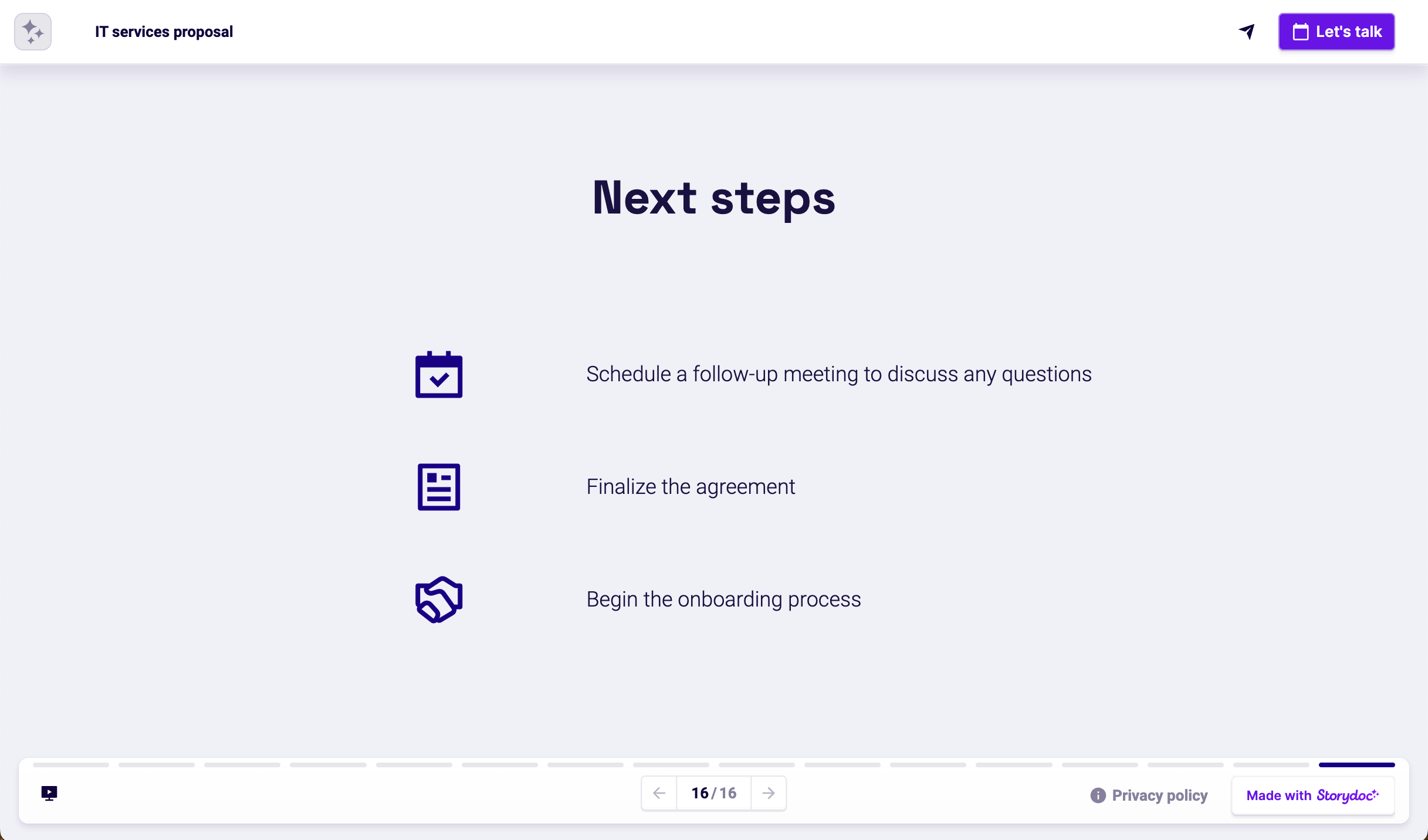Writing a Business Proposal That Wins Deals (+Templates)
Learn how to write a business proposal that stands out, impresses buyers & seals more deals. Learn how to prepare and what to include in your proposal.


Learn how to write a business proposal that stands out, impresses buyers & seals more deals. Learn how to prepare and what to include in your proposal.
Short answer
Read on to get practical details for each slide ⤵
A business proposal is a presentation or PDF that details a product, service, or project to a prospective client. It is used near the end of the sales process and covers the prospect’s needs and objectives, and the provider’s solution, pricing, and expected outcomes.
A successful business proposal ends with the prospective client accepting and signing the document.
PDF is traditionally the go-to format for business proposals.
But in recent years, and increasingly with the rise of AI, leading sales teams and professionals are transitioning from static PDFs to interactive proposals that give prospects more freedom for customization, and increase the likelihood they’ll accept and sign the document.
Business proposals broadly fall under 3 types:
Service proposals cover services given over time such as cleaning, security, gardening, IT, staffing, and management.
Service proposals normally include start and termination dates for the service, rather than timelines and milestones, and focus on deliverables rather than KPIs.
Product business proposals cover a product or solution. It’s commonly used by B2B SaaS companies in high-tech or manufacturers that supply parts or raw materials to other companies.
This type of business proposal can focus on KPIs and ROI in the case of SaaS, or on delivered quantities and qualities in the case of manufacturers.
This is not to be confused with a product proposal given to stakeholders and decision-makers before product development or a product launch.
A business proposal for a project covers a service, a deliverable provided once, and limited in time. This type of proposal is used by providers such as consulting agencies, construction companies, engineering firms, legal firms, and website development companies.
Project business proposals focus on timetables, milestones, and the project’s impact as measured in KPIs and ROI.
These are not to be confused with project proposals made outside the sales context. Such project proposals are used internally (or externally as part of a broader service) to get the buy-in and backing of stakeholders and decision-makers.
This type of project proposal is closer to a project plan than a business proposal.
These business proposals are used as part of early prospecting to generate leads and MQLs. These are essentially the same as sales prospecting decks.
These proposals, sometimes called sales proposals, are used after one or more sales meetings have occurred and only after the prospect has shown interest in buying. This is what most people refer to when saying “business proposal”.
An RFP response is sent only when an RFP is issued for a service or solution you provide. Often the RFP will have particular requirements and a specific structure and format for application.
TIP: Write your proposal quickly. Writing effective business proposals quickly is essential for closing deals. Proposals don’t have to be perfect, but they need to be timely to keep the prospect engaged and avoid ghosting.
How to make a business proposal title slide that sets you apart?
To nail your cover slide, and stand out from other proposals competing for their business do the following:
TIP: It’s good practice to put a face to the note, to make it warmer and personal (like in the example below).
TIP: Adding jump-links will provide you with click data on which slides prospects found most important. With this info, you could follow up with them knowing exactly what issues to address.
What to include in a business proposal executive summary?
TIP: Using a slide template like in the example below you could embed a video about your business, product, service, and expertise, and reduce the text needed to deliver your message.
How to create an effective business proposal solution slide?
Ensure your value proposition clearly solves the client's business challenge.
How to make and present a business proposal solution slide?
When creating this slide:
This will remove uncertainty and unwanted surprises. It will give the client the confidence to move forward and help you justify pricing.
When presenting this slide:
This will help to align the client’s expectations for response times and meeting schedules with what you are willing to do.
Importantly, be cautious about offering too much access using direct messaging to avoid constant interruptions.
How to make a business proposal outcomes slide?
How to create a business proposal team slide?
How to make a case study slide?
Use your best-known logos, but not at the expense of relevancy.
Use tabs to minimize the space needed to present the case studies
How to build an effective business proposal pricing slide?
Things to ensure in your terms and conditions:
How to create an effective next steps slide?
NOTE: Do your best to prevent your prospects from printing out your proposal. A 2020 study found that once someone prints your proposal, your chances of landing the deal shrink by 84%!
Another benefit of using digital proposals is that you get engagement analytics that gives you visibility into who inside the client’s organization read the proposal, how long, which slides they focused on, and who they shared it with.
Stop losing opportunities to ineffective proposals.







